Sturgeon Information and Facts
Pro Guides Kevin Newell & Lacey DeWeert
Sturgeon Information and Facts
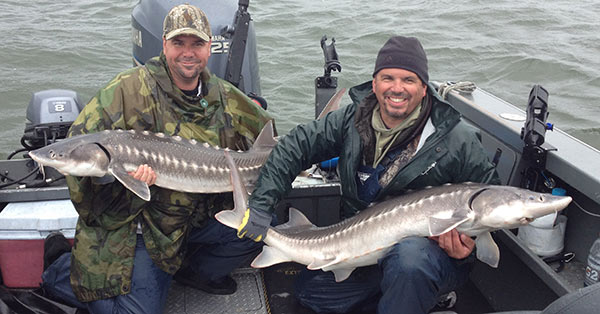
Sturgeon is the general name referring to 26 individual species of fish from the biological family Acipenseridae.
Out of the 26 species, over 20 are just commonly referred to as Sturgeon. The remaining few are distinct but closely related species, examples including the Beluga and the Kaluga.
The Sturgeon is one of the oldest species of bony fish in the world.
Native to the temperate, sub-Arctic and subtropical areas Europe, Asia and North America; the Sturgeon is distinguished by an elongated body, absence of scales and occasional huge size.
Borrowing from evolutionary biology, the current species of Sturgeon date back to as many as 50 million years ago. However, they still portray the distinct characteristics of the species, such as heterocercal tail fins (a tail where the top lobe turns upward and often extends past the lower part).
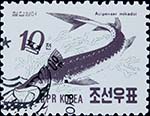

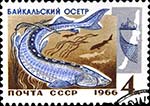
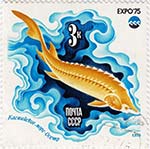
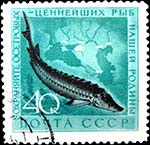
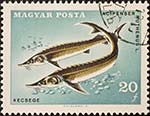
Major Sturgeon Species and Respective Habitats
- Siberian Sturgeon(Acipenser baerii) are common in the Lena River regions of Siberia.
- Shortnose Sturgeon (Acipenser brevirostru) is a North American species common in more than 15 estuary and large river systems along the Atlantic seaboard.
- Yangtze Sturgeon (Acipenser dabryanu) is a species rampant in China's Yangtze River.
- Lake or Rock Sturgeon (Acipenser fulvenscen) is a North American temperate freshwater fish species.
- Diamond or Russian Sturgeon(Acipenser gueldnstaedtii) species is common in the Black Sea and Danube regions.
- Green Sturgeon (Acipenser medirostris) are a saltwater fish that venture into freshwater. They are native to the Pacific Ocean, and can be found in areas of China, Russia, the US and Canada.
- Sakhalin Sturgeon (Acipenser mikado) is a common sight in the Eastern Asia regions of China, South Korea, Japan and Russia.
- Adriatic Sturgeon (Acipenser naccarii) are found in Albania, Greece, Montenegro, Slovenia and Croatia.
- Ship Sturgeon or also known as the Bastard Sturgeon (Acipenser nudiventri) is a species abundant in Russian and Kazakhstani stretches of the Ural River.
- Gulf Sturgeon(Acipenser oxyrinchus desotoi) It is common in the Gulf of Mexico and also in some river that drain into it.
- Atlantic Sturgeon (Acipenser oxyrinchus oxyrinchus) can be found from the New Brunswick area of Canada to the Eastern Coast of Florida.
- Persian Sturgeon (Acipenser persicus) is an endangered species of Sturgeon residing in the Caspian Sea.
- Sterlet Sturgeon (Acipenser ruthenu) sometimes also called the Albino Sturgeon, refers to the species common in Eurasia.
- Japanese Sturgeon (Acipenser multiscutatus) indigenous to Japan this species resides in brackish, fresh and salty waters.
- Chinese Sturgeon (Acipenser sinensis) resident of China. Its fossil record goes back as far as the dinosaur era.
- Drakul or Starry Sturgeon (Acipenser stellatus) is an adaptive resident of the Black, Azov, and the Caspian seas.
- Common Sturgeon (Acipenser sturio) is resident along most of the coasts of Europe.
- White Sturgeon (Acipenser transmontanus) is also occasionally referred to as the Oregon or Pacific Sturgeon and lives along the west coast of North America.
- Closely Related Species
- Kaluga Sturgeon (Huso dauricus) The Kaluga Sturgeon is a large predatory Sturgeon common in the Amur River basin. This species is reportedly one of the biggest freshwater fish in the globe, and can weigh up to one ton and extend to lengths of up to 5.6 meters.
- Beluga Sturgeon (Huso huso) Referred to as the European Sturgeon, this species is rampant in the Caspian and Black Sea basins. Other habitats of the Beluga include the Adriatic Sea. Belonging to the same genus and very similar to the Kaluga species, the Beluga can live for as many as 118 years. The largest of all freshwater fish, the Beluga can grow to up to 1500 kg. This is based on a recorded occurrence where a female captured in 1827 in the Volga estuary weighed 1.572 tons.
- American Paddlefish (Polyodon spathula) Closely related to Sturgeon, this is a large freshwater fish that can grow to 7 feet in length and weigh as much as 100 kg. The American Paddlefish is also referred to as the Mississippi Paddlefish or the Spoonbill. It is unique looking with its distinctively long snout, which is also flattened to assume the shape of a paddle.
- Chinese Paddlefish (Psephurus gladius) Also bearing the name ‘Chinese Swordfish’, it is the accompaniment species of the American Paddlefish. Sometimes, it is also referred to as an elephant fish as it bears a long snout resembling an elephant trunk. The species is resident in Chinese Lakes and in the lower and middle streams of the Yangtze River.
- Syr Darya Sturgeon (Pseudoscaphrhynchus fedtschenkoi), and the Dwarf Sturgeon A member of the Acipenseridae family, the Syr Darya Sturgeon is native to Kazakhstan, Uzbekistan and Tajikistani waters. The Dwarf Sturgeon a critically threatened species common in the same habitats as the Syr Darya.
- Alabama Sturgeon (Scaphirhynchus suttkusi ) The Alabama Sturgeon is a critically threatened fish native to the US, in the lower stretches of the Alabama River. Unique with a yellow-orange color, it grows to about 30 inches and can live for up to 20 years.
- Shovelnose Sturgeon (Scaphirhynchus platorynchus) This is the smallest species of freshwater Sturgeon native to the US. Sometimes referred to as the Sand Sturgeon, it is found in the Mississippi and Missouri River systems.
- Pallid Sturgeon (Scaphirhynchus albus) This is one of the rarest species of fish in Northern America. The Pallid species was listed as endangered by federal authorities in 1990. Now occurring in low numbers in the Missouri and Mississippi River systems, its decline is presumably due to rampant damming of its rivers and loss of habitat.
Geography and Distribution of Sturgeon
While Sturgeon can be found in many parts of the globe; they are exclusively located in rivers, lakes and oceans in the northern hemisphere.
Generally; North America, Azerbaijan, Bulgaria, Romania, Kazakhstan, Russia, Turkmenistan, Ukraine, Turkey and other European countries harbor Sturgeon in their rivers, lakes, seas and estuaries. 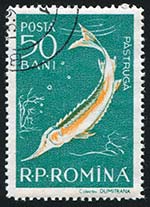
The most general way to identify a Sturgeon is through its 5 rows of bony angular plates, inserted in the skin. In addition, Sturgeon have four barbels in front of their mouths, plus a distinguished eye incline.
The Sturgeon family (Acipenseridae) is split into two subs, Acipenserinae and Scaphirhynchinae. Each of these subs is consecutively composed of two genera. Nonetheless, most of the major species of Sturgeon are to be members of the Huso and the Acipenser Genera of the Acipenserinae Sturgeon subfamily.
Sturgeon Feeding and Reproduction
While most Sturgeon spend their lives in the sea, they do migrate upwards to freshwater venues for spawning purposes. A Sturgeon will spawn in any area that has turbulent current and hard substrates such as boulders and cobbles.
The Atlantic Sturgeon
A brown and bluish-bodied species, the Atlantic Sturgeon has a whitish belly and a long, hard snout punctuated by an upturned tip. This snout is used to root through mud substrates and locate prey. The Atlantic Sturgeon feeds on benthic organisms such as worms, crustaceans and insects. Living commonly at the bottom levels of freshwater rivers, the Atlantic Sturgeon tends to move individually, as opposed to most other fish species which move in schools. The Atlantic Sturgeon, an anadromous fish like most other sturgeon, will spend a good deal of its life in the ocean before traveling upstream to spawn. The Atlantic Sturgeon spawns from the months of April to June in the same freshwater river it was born. According to documented scientific findings, a single Sturgeon will lay up to 2 million eggs, and only makes an upstream trip to spawn every 3-5 years. 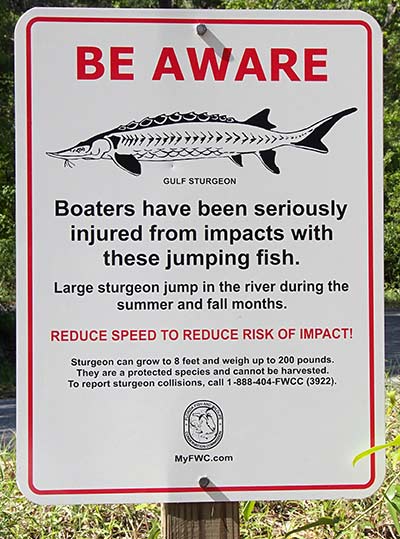
While male Atlantic Sturgeon take only 10 years to sexually mature, females take as long as 20.
Generally, an Atlantic Sturgeon can live up to 60 years.
The White Sturgeon
Out sized only by the Beluga and the Kaluga, the White Sturgeon is the third largest of the sturgeon species. As it is, this species still remains the largest freshwater fish in North America.
The White Sturgeon is an anadromous fish that is characterized by slow growth and late maturity. Although Sturgeon have poor eyesight, they employ their barbels to feel for prey when feeding. Like the Atlantic Sturgeon and other species, the White Sturgeon uses its vacuum like mouth to suck in prey.
While young, White Sturgeon feed on insect larvae, small invertebrates, chironomids, and mollusks. As they grow bigger, however, they narrow down to mostly shrimp, mollusk and fish based diets. Studies have indicated that White Sturgeon move no more than just a few kilometers during summer - the feeding season.
However, when need arises to travel for spawning and reproductive purposes, the White Sturgeon can extend to a distance of over 100 kilometers. White Sturgeon spawn during spring and summer and may only repeat the process every 4-11 years.
A White Sturgeon will spawn in an area with turbulent fast waters, such as in the tail-waters below a dam or below a waterfall such as is the case on Oregon’s Willamette River.
While adult White Sturgeon can be found in deep, fast waters of large rivers, young White Sturgeon prefer the slower moving backwaters and side channels out of the river's main flow. This being said, sturgeon both adult and juvenile will go anywhere they want to find food and comfort and overlap each others traditional holding areas.
The Beluga Sturgeon
The largest Sturgeon in the world is the Beluga Sturgeon. It is a slow growing and a late maturing species. Its body is shaped like a torpedo and it’s distinguished by a short, slightly upturned snout.
Naturally a predatory species, a Beluga Sturgeon actively searches and captures food organisms during its hunting expeditions. Typically, juveniles (in the 1st year of the life cycle) feed on small fish, gobies, mollusks and crustaceans.
From the second year on in the life cycle, Beluga Sturgeon essentially transfer to full predation. A study carried to establish dietary compositions established that up to 98% of all food found in the stomach of a Sturgeon is fish.
The feeding rate of the Beluga is influenced by various factors such as temperature, season, feeding area and density of food organisms.
The Beluga travels for up to 400-1200 km from the Caspian Sea upstream in the Ural River for suitable spawning grounds. Eggs are deposited on hard substrates such as course sand, gravel and pebbled surfaces.
While most males reach sexual maturity age between 12-15 years, females take as long as 15-20 years before they can spawn for the first time.
The Pallid Sturgeon
The Pallid Sturgeon is mostly similar to another Sturgeon species, the Shovelnose Sturgeon. However, it is characterized by a longer and more pointed snout.
The Pallid Sturgeon will range anywhere between 30 and 72 inches, and can weigh up to 100 pounds. This species is a bottom dweller in the Mississippi and Missouri River systems.
Additionally, they are normally common in areas that have a strong current and firm sand substrate.
A predator, the Pallid Sturgeon will feed on small fishes and immature aquatic insects sucked from the bottom muddy substrates.
The Pallid Sturgeon can live for at least 39 years. Typically, a male matures sexually at the age of 7 years. In contrast, however, a female normally takes anywhere between 15 and 20 years to be able to spawn.
Sport Fishing for Sturgeon
Unlike most other fish species, Sturgeon are often very easy to catch. The majority other other fish species move from place to place from day to day and from season to season. On the other hand, once you find a spot, Sturgeon are almost always there - at the bottom. This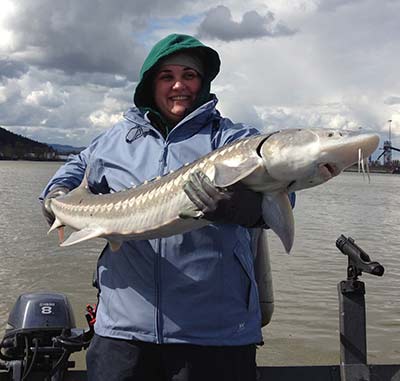 makes catching them an achievable task. However, it should be pointed out that sometimes they move a few kilometers in search of food, in which case fishing for them now becomes a waiting or searching game.
makes catching them an achievable task. However, it should be pointed out that sometimes they move a few kilometers in search of food, in which case fishing for them now becomes a waiting or searching game.
In the US and Canada, the best fishing spots for Sturgeon are areas with heavy current, more so those that are close to deep waters. An area with large boulders or a rocky texture is also a good place to start. As it is, such an area would also make a good candidate for a habitat where Sturgeon would spawn and this is why the area below the Columbia River’s Bonneville Dam is closed during the sturgeons spawning season.
White Sturgeon
Fondly referred to by sports fishing buffs as Gators, Diamond Sides or Old Bucket Mouth, the White Sturgeon provides quite an epoch adventure for fishing enthusiasts. Native along the Western Coast of North America, the White Sturgeon has been a prized catch of many anglers.
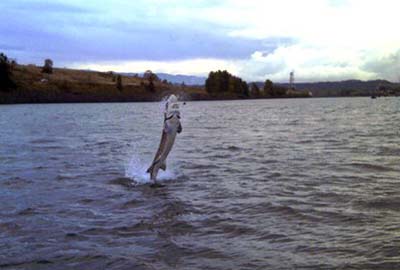 Sports fishing for the White Sturgeon is popular on the waters where these fish are abundant. Sturgeon fishing charters and guides are in operation on Canadian and US rivers. Some of the common grounds where Sturgeon fishing takes place in California are the Sacramento River Delta, Susin Bay, San Pablo Bay and the Carquinez Straights. Oregon’s Columbia River and Canada’s Fraser River are also common fishing grounds for White Sturgeon.
Sports fishing for the White Sturgeon is popular on the waters where these fish are abundant. Sturgeon fishing charters and guides are in operation on Canadian and US rivers. Some of the common grounds where Sturgeon fishing takes place in California are the Sacramento River Delta, Susin Bay, San Pablo Bay and the Carquinez Straights. Oregon’s Columbia River and Canada’s Fraser River are also common fishing grounds for White Sturgeon.
On the Columbia River the daily allowable possession of White Sturgeon is a single fish, which must be between a certain length 38” to 54” (some areas are 41” to 54”) when measured from the nose to the fork of the tail. Any White Sturgeon that is not within this size bracket must be immediately released unharmed.
In addition, regulations state that a sturgeon must take the bait in its mouth out of its own volition. Because of this, no sturgeon snagging, gaffing or trolling sports activities are allowed.
Sturgeon Fishing Equipment
While fishing for sturgeon will cost you patience and time, it might not cost much in terms of fishing gear. Well, at least there aren’t any expensive lures to buy, or complex rigs. A good quality swivel, a stout rod with flexible tip, a spool of heavy mono or braided line, a selection of sinkers and a large 6/0 to 8/0 single barbless hook make up your entire assortment of fishing equipment.
For a more effective strategy, longer rods tend to have softer tips as compared to shorter rods. This is a very significant because most Sturgeon bites are visually-detected, as opposed to just feeling. Whenever you detect a telltale tapping on the tip of the rod, it is advisable that you get ready, and when you feel pulling, it is then time to set the hook.
Since sturgeon come in different sizes, and large fish can be found in areas of speedy current, it is wise for an angler to be armed with a heavy rod and a strong reel setup. The main line being used must also match the conditions and 65# braided line is most commonly used on the Columbia River.
Commercial Fishing for Sturgeon
Atlantic Sturgeon Fishing
During the early decades of American and Canadian colonization, Atlantic Sturgeon were an important component of commerce. During this time, large quantities of meat, caviar and oil were exported to European destinations.
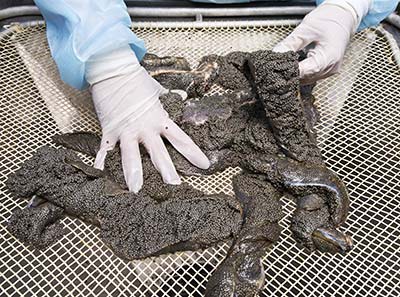
As roe (caviar) grew in popularity among the North American population, so did the demand for the Atlantic Sturgeon. During the years that ensued, heavy exploitation of the species lead to a major reduction in their numbers.
Based on this reduction, in the US, Atlantic Sturgeon fisheries were closed in 1997.
No sport or commercial fishing activities involving the Atlantic Sturgeon are allowed in the waters of the United States Atlantic Coast.
In Canada, however, active commercial fisheries are still allowed for sub adult Atlantic Sturgeon in the St. Lawrence River. However, a quota of 60 tons remains in effect since 1997 in this river’s fishery. Commercial fishing is also allowed for larger fish in the St. John River. In addition, the government has also licensed a single commercial sturgeon fisherman on the Shubenacadie River of Nova Scotia.
Beluga Sturgeon
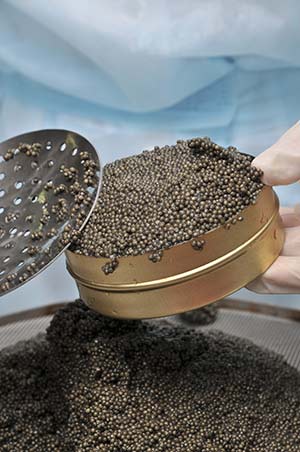
One female Beluga Sturgeon is potentially worth thousands of dollars for its caviar.
Commercial fishing for this species can be compared to a gold rush, even more so in the Caspian Sea.
Commercial sturgeon fishermen can make as much or more off of the caviar from one large female sturgeon then they would fishing all season for normal food fish.
While some illegal instances of Beluga fishing are still recorded in several areas of the world, the International Union for Conservation of Nature has suggested a total ban on any fishing activity involving the Beluga species.
The reason put forward for this suggestion is overfishing in the Caspian Sea, which has seen a dramatic reduction in the population of this huge and fantastic species.
Pallid Sturgeons
Listed as a threatened species, no commercial fishing activities are allowed in the US for the Pallid Sturgeon. The harvest of either the Pallid or the Shovelnose Sturgeons for flesh or roe is restricted in the Missouri and most parts of the Mississippi River systems.
Very rare and an endangered species, the Pallid Sturgeon provides no sport fishing opportunity.
The Conservation Status of the Sturgeon Species

Sturgeon co-existed with the dinosaurs. Many scientists are amazed at the Sturgeon’s resilience and find it surprising that no species of modern day sturgeon has yet to become extinct. However, fisheries biologists have learned through time that Sturgeon are easily impacted by over-exploitation (mostly for caviar) and habitat degradation.
Globally, many Sturgeon species are in jeopardy of extinction.
The Atlantic Sturgeon
The Atlantic Sturgeon was declared a threatened species by the National Oceanic and Atmospheric Administration Fisheries Service, in February 2012. The Atlantic Sturgeon has been designated endangered in most river systems.
Historically over-exploited for caviar, the Atlantic Sturgeon species now exists in most habitats in alarmingly low numbers. To save the species and give the Atlantic Sturgeon the best chance of recovery, authorities are now working on improving ‘critical habitats’.
The White Sturgeon
In November 2003, the Canadian Committee on the Status of Endangered Wildlife reduced the status of the White Sturgeon from ‘species of special concern’ to ‘endangered’. However there are areas such as Oregon’s Columbia River where White Sturgeon populations are strong with over a million fish living in the Lower Columbia and Willamette Rivers.
Among other factors, angling, incidental catches and poaching are some of the factors blamed for Canada’s declining sturgeon numbers.
Another factor is the damming of the Nechako River for power generation in 1952. This greatly contributed to the decline of the White Sturgeon population. In addition, predators attracted to the river by changed temperatures and conditions also further endangered the species.
The Beluga Sturgeon
Like most other major Sturgeon species, the population of Beluga has declined by over 90% within the last few decades. The population in the Caspian Sea is almost depleted. Among other things, authorities in the US, Russia and other nations have completely banned harvesting of Beluga Caviar. In addition, fishery management authorities are focusing on hatcheries as a way of saving the Beluga species. This approach, however, raises issues on genetic diversity.
The Pallid Sturgeon
In 1990, the U.S Fish and Wildlife Service listed the Pallid Sturgeon as an endangered species. As of now, the species is rarely sighted in the wild. Channeling and damming of the Mississippi River system has been seen as one of the key reasons leading to this status.
Efforts to safeguard the species from extinction have witnessed only average success. The approach being employed involves raising the fish in a dozen hatcheries. The offspring are then released into wild habitat. Researchers are also employing GPS technology to track the movement of Pallid Sturgeon to figure out possible spawning grounds.
More: Sturgeon Bay Wisconsin and Sturgeon’s Law Sturgeon Bay, Wisconsin
Also named Wisconsin’s friendliest small town, Sturgeon Bay is the county seat of Door County – and the only city in the peninsula. Based on 2009 statistics, Sturgeon Bay had a population of 8,882.
The community received its name for several reasons. In addition to the fact that there were abundant Sturgeon, some people thought that the bay was also shaped somewhat like a Sturgeon.
Historically, its economy was mostly based on lumber. However, this changed when the canal joining Lake Michigan and the Green Bay opened up to shipping sometime in 1881.
Some of the attractions around Sturgeon Bay are Potawatomi State Park, Heritage Hill State Park and Whitefish Dunes State Park.
Sturgeon Bay is equipped with a number of local golf courses such as the Oconto Golf Club, the Alaskan Golf Club, and the Idlewind Golf Club. This makes it the perfect place to go golfing.
The Ashwaubenon Historical Society Museum and the White Pillars Museum are some other local places a visitor might want to pass by on Sturgeon Bay.
- Sturgeon’s Law
This is an adage derived from a quote by popular science fiction composer Theodore Sturgeon. In his quote, Theodore said ‘Sure, 90% of science fiction is crud. That’s because 90% of everything is crud’. When most people cite this quote, however, they tend to replace the final word with ‘crap’. In popular think tanks, Sturgeon’s Law is extended to mean that the existence of immense quantities of crap in scientific fiction is accepted and regrettable; but it’s no more unnatural than the existence of crap anywhere.